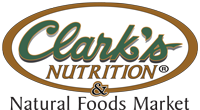Search Healthnotes

Related Topics
- By Suzanne Dixon
From "Gluten-Fear" to Gluten-Free
Understanding the finer points of gluten—a protein found in grains such as wheat, rye, barley, KAMUT wheat, and triticale—is an important part of everyday living for people managing gluten-related diseases, such as celiac disease, psoriasis, and rheumatoid arthritis.
For those with celiac disease in particular, gluten can trigger an immune response, leading to damage in the body and nutrient malabsorption And unlike some allergies and intolerances, in which you can have “a little” of the offending food, with gluten, even as little as 50 mg of gluten per day may trigger immune reactions for those with celiac disease. So it's extremely important to be aware of hidden sources of gluten and the best way to avoid traces of gluten from slipping into food.
Following a gluten-free diet does become easier with practice, and with time
Guide yourself to a gluten-free life
It’s completely reasonable to mourn the loss of your carefree eating habits when you learn you have to start following a modified diet. Avoiding an ingredient as common as gluten can seem an impossible task, but be comforted: following a gluten-free diet does become easier with practice and with time. Arm yourself with knowledge and you can move from fear of gluten to freedom from gluten, regaining your health in the process.
Mastering gluten-free food preparation
If only one person in the household is following a gluten-free diet, the most important task will be to prevent gluten-containing foods from contaminating gluten-free foods. The following tips will help you accomplish this goal:
- Use separate cleaning cloths and sponges. Soap and water will keep your kitchen clean, but a fresh cleaning cloth should be used prior to gluten-free food preparation. Clean with your regular cloth first, then use your “gluten-free cloth” for final cleaning.
- If possible, fix the gluten-free part of your family’s meals and snacks first. You’ll start with a clean kitchen, reducing the risk that gluten-containing crumbs or food come in contact with gluten-free food.
- Use separate utensils to handle gluten-free food. For example, plain fish should not be picked up with the same spatula used on breaded fish.
- Keep clearly labeled, separate condiments for the gluten-free diet. Mark a large “GF” on the designated gluten-free peanut butter, jelly, butter or margarine, mustard, ketchup, and other items, to avoid gluten-containing crumbs and food from finding their way into these items.
- It’s OK to cook gluten-free and regular food in the same oven, as long as they do not come into contact with one another.
- Put the gluten-free items on the highest oven rack when cooking gluten-free and regular foods together. This will prevent crumbs or food particles from regular food dropping into your gluten-free dish.











